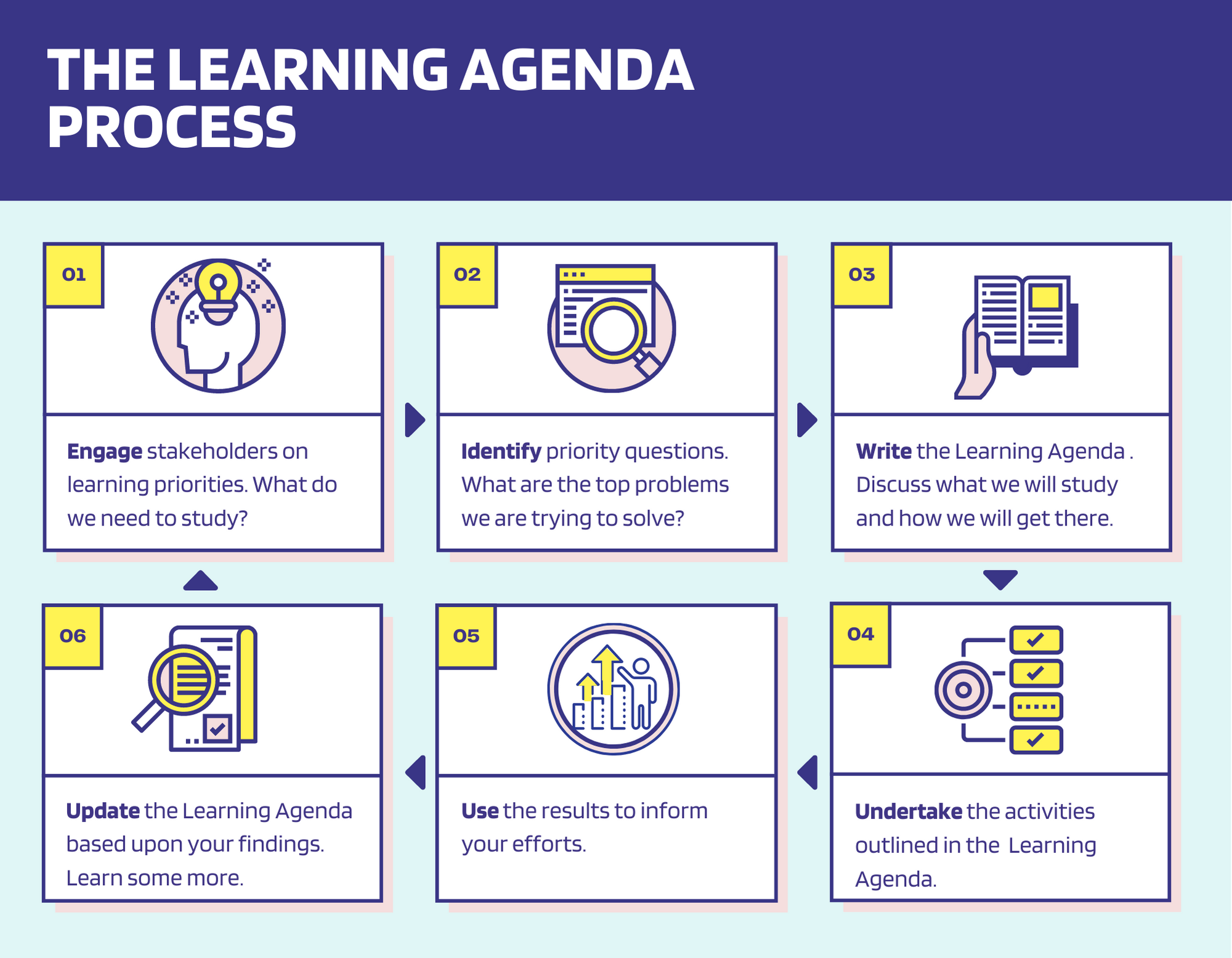Federal agencies are spending the next six months finalizing comprehensive Learning Agendas, which serve to focus leaders’ attention on building the research and evidence needed to solve big problems. Federal agencies will be publishing these Learning Agendas next February, and they are an important milestone for implementation of the Foundations of Evidence-Based Policymaking Act of 2018 (P.L. 115-435) and agencies’ efforts to improve Government effectiveness and advance a more equitable society. These efforts support the Biden-Harris Administration’s focus on evidence-based policy and help create a culture of evidence throughout the Government.
To complement and build on agencies’ Learning Agendas and fiscal year (FY) 2023 Annual Evaluation Plans, the Office of Management and Budget (OMB) is exploring the development of a Federal Government-wide learning agenda that would focus on key cross-cutting management questions – the kinds of questions about how the Federal Government operates that apply across agencies.
The goal is to identify key cross-cutting unanswered questions raised by agency Learning Agendas and other sources and then encourage research within, beyond, and in partnership with the Federal Government to address those questions in a coordinated way. OMB will engage partners in these efforts, including the evidence and policy team at the Office of Science and Technology Policy, and others who have an interest in strengthening ties between the research community and the Federal Government. This work can deliver measurable results for all Americans, by doing the following:
- Reinforcing a focus on innovation and learning. A learning agenda is not about delivering a thumbs up or down on a program for compliance monitoring. It is about learning which approaches work, why, and for whom, so those lessons can be applied across contexts.
- Bridging silos. Many of the most pressing issues do not fit neatly within the boundaries of a single agency. A Government-wide learning agenda provides the opportunity to coordinate learning and evidence-building across multiple agencies.
- Catalyze innovation on priority questions beyond the Federal Government. Many researchers, State and local leaders, and practitioners across the country are piloting and testing innovations and generating evidence to better serve their communities. Clearly communicating a Government-wide, management-focused learning agenda can catalyze coordinated innovation within and across agencies across State, local, and Federal Governments.
The learning agenda process involves six key steps to prioritize key unanswered questions and facilitate a coordinated effort to address those questions.

The following case study is an example of how multiple related studies are useful in tackling a common question: What can be done to increase retirement savings?
In 2015, the Department of Defense (DOD) wanted to address the issue that more than half of 1.3 million active duty service members in the Armed Forces were not currently enrolled in any Thrift Savings Plan (TSP) retirement savings plan, which could prevent them from having sufficient resources when they retire. When DOD worked with a research team to test the effect of explaining TSP savings during in-processing, the number of service members enrolling in TSP doubled. Similar priority questions from the Department of the Treasury, the United States Postal Service, and the Social Security Administration led to a series of 10 related studies in partnership with GSA’s Office of Evaluation Sciences, testing multiple successful efforts to increase enrollment in retirement savings plans and support benefit claiming decisions across different agencies. Taken together, these efforts have led to cross-agency learning and concrete improvements in how public servants prepare for retirement, with millions of additional dollars put into retirement savings.
This successful effort began with a proactive plan to answer a specific question with targeted data and evidence, progressed with a series of coordinated studies, and the results (both successes and misses) were shared openly to maximize learning. These studies showed that small, solvable barriers to enrollment were limiting retirement savings. Informed by this evidence, in 2017, the National Defense Authorization Act formalized auto-contributions for servicemembers. Across these studies and subsequent policy changes, hundreds of thousands of Americans saw measurable increases in their retirement savings and benefits.
Over the coming months, we plan to:
- Develop an inclusive process for informing this potential Government-wide learning agenda, to draw on insights both within and beyond Government.
- Collect input on shaping and refining key unanswered questions. Potential priority areas include:
- How can we advance equity and support underserved communities?
- How can we help the Federal workforce thrive, so it can best serve the American people?
- How can we deliver Government programs and services effectively and build trust?
Please check back for updates and ways you can provide input.




